Results 8,951 to 8,960 of 12096
Thread: Anandtech News
-
12-14-18, 12:36 PM #8951
Anandtech: Samsung Unveils 2019 Notebook 9 Pen 13 & 15
Samsung on Thursday introduced its next-generation Notebook 9 convertible laptops that will hit the market next year. The new lineup of convertibles includes models with a 13.3-inch display or a 15-inch display. These models and are aimed at professionals who need performance of Intel’s Core i7 CPUs along with convenience of a stylus in a relatively portable package. Also notable is that the new systems are the industry’s first PCs from a renowned brand to feature a UFS card reader.
More...
-
12-17-18, 07:22 AM #8952
Anandtech: Quick Look: Kensington SD7000 Surface Pro Docking Station
Earlier this year, Kensington announced their new docking station specifically designed for the Microsoft Surface Pro. The SD7000 transforms the Surface Pro into a miniature version of the Surface Studio, and offers some unique features as well.
Looking at the design and it is very clear where Kensington is getting their inspiration. The two chrome arms on the side are a definite nod to the Surface Studio, and with the grey base, Kensington has done a great job to match the aesthetics of Microsoft’s all-in-one PC. And like the Surface Studio, the display can be adjusted from an upright vertical stance for use as a desktop, or rotated down for use with the pen. It’s a very clever way to ensure that the Surface Pro doesn’t lose functionality when docked to a set of desktop peripherals.
There’s a magnetic mounting point on the left side to dock the pen when it’s not in use, and the right side features a slide-out Surface Connect port which is used to connect the Surface Pro to the dock. As this accessory is from Kensington, they also care about device security, and you can add-on an optional locking cable which locks the Surface Pro into the dock, and then locks the dock onto the desk.
Since it uses the Surface Connect port, it of course doubles as charging, as well as data and video over the one connection. The SD7000 expands the Surface Pro connectivity by adding four USB Type-A ports, as well as one USB Type-C port. Since the Surface Pro doesn’t support USB-C natively, the ports are all Gen1 speeds of up to 5 Gbps, but the Type-C port can deliver 5V @ 3A for 15-Watts of power for attached accessories.
Buy the Kensington SD7000 Surface Pro Dock at CDWKensington SD7000 Surface Pro Docking StationSD7000 Supported Models Microsoft Surface Pro 4
Microsoft Surface Pro 5 (2017)
Microsoft Surface Pro 6Display HDMI and DisplayPort
Up to 3840x2160 x 2 @ 30 Hz
Up to 3840x2160 x 1 @ 60 HzUSB 4 x USB 3.0 Type-A (5v/0.9A)
1 x USB 3.1 Gen1 Type-C (5V/3A)Ethernet 10/100/1000 Mbps Locking Optional Lock Module (K62918WW) Audio 3.5mm Headset Jack Street Price $399 USD
For video, the SD7000 offers both a HDMI connection as well as a DisplayPort connection. This allows connection of up to two external monitors, with a maximum resolution of UHD 3840x2160. Please be aware though that the Surface Connect port only has enough bandwidth for a single UHD resolution at 60 Hz refresh, so if two UHD displays are connected, they will have to be run at an undesirable refresh of 30 Hz. This is a limitation of the Surface Pro though, and not on Kensington.
There is of course a Gigabit Ethernet and 3.5 mm audio jack as well to complete the connectivity.
The SD7000 is designed for the Surface Pro 4, 5, or 6. Placing the Surface Pro into the dock is not very difficult. You just slide out the Surface Connect attachment on the right side, and then slide the tablet into the dock, and then press the Surface Connect port in place.
Overall the SD7000 works as expected, and works as well as the Microsoft docking station, but with more connectivity and of course the articulating hinge to make the tablet work better as a second desktop display. The dock is made out of plastic though, so it doesn’t match the feel of the Surface Pro’s magnesium alloy, even though it does match the color perfectly.
When docked and with the display raised to its maximum height, one drawback is that the display can’t be rotated to a complete vertical. Instead the display sits at about 70° when the arms run into the stop. It isn’t a huge deal though, since the display is still going to be slightly lower than any desktop display, so the angle helps with viewing. It’s just more of an aesthetics thing. In addition, the articulating arms aren’t quite stiff enough to hold the display anywhere you stop it. It is really meant to be used in just the up or down position. If they made them stiffer it would be difficult to move when you do want to angle it.
Ironically, despite the SD7000 offering far more connectivity than either the Microsoft Surface Dock, or the Surface Pro itself, it doesn’t offer any connections on the front, which would be handy in many situations. It would also be great to see a SD card reader slot on the front or sides, if a second generation comes along. By mimicking the Surface Studio design, they’ve also run into the same issues, where any front mounted ports would be blocked or contacted when the display is lowered, so it is understandable why they aren’t there, but they would still be useful. Luckily you can still get to the USB port on the Surface Pro itself to quickly hook up a USB drive or something similar.
One final issue is that the dock can’t be used when the Type Cover is connected to the Surface Pro, for fairly obvious reasons. The downside here is that storing the Type Cover is now necessary, whereas the Microsoft dock lets you leave it attached because it’s just a cable to the external docking connections.
The SD7000 has a street price of $399, which is quite a bit more on top of an already expensive Surface Pro, but thanks to the better usability when docked, as well as the great connectivity, this is likely going to interest many people who want to extend the Surface Pro into a lightweight desktop.
More...
-
12-17-18, 11:36 AM #8953
Anandtech: The MSI MEG Z390 ACE Motherboard Review: The Answer To Your USB 3.1 Needs
The MSI Z390 ACE sits below the MSI Z390 Godlike in the company's product stack and has plenty to shout about including a trio of M.2 slots, a well built power delivery, and as many USB 3.1 Gen 2 ports as you could ever need.
More...
-
12-18-18, 08:59 AM #8954
Anandtech: Arm Announces Cortex-A65AE for Automotive: First SMT CPU Core
Back in September, Arm had announced the new Cortex A76AE CPU with focus on automotive applications. Today, Arm finally formally announces a next gen processor with simultaneous multithreading, the new Cortex A65AE.
The older A76AE CPU was Arm’s first to feature the “split-lock” technology that allowed two CPU cores to operate in a configurable lock-step operation mode, allowing the units to process tasks in parallel to each other and compare results for discrepancies – achieving a required level of functional safety of the software that is run on the system.
The Cortex A76AE was pretty much focused on heavy compute tasks and thus also fully takes advantage of the new high performance that is delivered by Arm’s new microarchitecture that came out of the Austin design centre. During the reveal of the A76AE, there were mentions of a “Helios” CPU core – to date it wasn’t too clear what this was meant to be, but it very much seemed like a new class of core that was meant to accompany the A76AE.
The Arm Cortex A65AE
Today, Arm finally formally announces the new Cortex A65AE, and although today’s material isn’t a full technical disclosure of the new CPU core, it does finally shed a little bit of light of what Helios is meant to be.
Much like during the Cortex A76AE release, Arm talked quite a bit about the needs of the automotive market and how cars are becoming increasingly demanding in terms of their need for compute power. Every single part of a car is becoming increasingly computerised, and advances in ADAS and future autonomous applications will explode the amount of processing power needed.
While the Cortex A76AE was focused on applications where high performance is needed, the Cortex A65AE is focused on high-throughput applications. The difference here would be in a sense the difference between demanding single-threaded workloads and demanding highly parallel and numerous multi-threaded workloads. Of the latter scenario, Arm emphasises the requirement of sensor processing in autonomous driving. Here the amount of sensors in a car is said to massively increase, and with it, also the need for higher throughput processing power.
Arm’s First SMT CPU Microarchitecture
Today’s announcement is a bit of an odd one in that we're talking about something important like Arm's first SMT microarchitecture as part of a more mundane automotive IP announcement, and yet the use-case presented here is the perfect fit for it. The Cortex A65AE is Arm’s first multi-threaded CPU core, allowing two threads to be executed per core. At the moment Arm is being very tight-lipped about the details of the microarchitecture, but they were able to comment on a bit of background information of the core.
As we’ve explained in the past, Arm usually has three main design centres which design the Cortex-A lineup of cores: The Cambridge team (A53, A55), the Sophia-Antipolis team (A73, A75), and the Austin team (A57, 72, and the new A76 family). The most interesting aspect of the Cortex A65AE is its heritage: although it was initially started by the Cambridge team, it then became a joint project and then finally finished to production quality by Arm’s newest team in their Chandler design centre in Arizona, making this effectively the first project coming out of this new team.
The reason why I dug into where the core came from is that it gives us greater perspective into what the microarchitecture might look like. Arm was able to disclose that this is indeed an out-of-order CPU core with SMT, but that’s about it in terms of what they were willing to reveal. The fact that the design started in Cambridge very much hints that this is somehow related to previous little cores such as the Cortex A53 and A55 – but the addition of OoO and SMT does make it seem more of distant cousin rather than a successor.
The only performance figure publicised during the presentation is the fact that the new CPU core is advertised as having a 3.5x higher throughput than the prior generation core in the same market segment – in this case a Cortex-A53. Arm usually makes performance projections based on the process node that an IP will typically be built on, again in this case that would be 7nm. Assuming a best-case scenario of 1.8-2x increased throughput through SMT, it still leaves quite a hefty difference that could be accounted for by frequency increases through the process node, or simply IPC improvements to the microarchitecture.
Again, the main benefit of the inclusion of SMT comes from the fact that in the primary automotive use-case of the Cortex A65AE, we’ll be seeing a load of sensors all communicating simultaneously to the central control unit of a car.
Arm’s SMT implementation also looks to be unique in terms of its functional safety features: Much alike “Split-Lock” mode on the Cortex A76AE where two physical cores can operate in lock-step with each other, the Cortex A65AE can also do this not only on a physical core level, but also on a thread level. Here a Cortex A65AE core can effectively have two threads operate in lock-step on the same core. Here the instruction stream and each instruction output is checked for discrepancies at a hardware level, all transparent to the operating software (Obviously in the case of a failure, an exception would be generated).
In a practical example of an envisioned system, we would see different clusters of Cortex cores dedicated to different workload tasks. In the above diagram, we would see multiple Cortex A65AE cores in a cluster operate independently in “Split” mode, maximising their throughput when working on sensor data collection.
The data processing would then be passed on to different clusters for perception and decision tasks: Here the cores would require higher levels of functional safety, and thus the CPU cores would be operating in lock-step mode. Arm also emphasised its flexibility in terms of the configuration of the Split-Lock layout of the hardware; it’s something that would be determined on a firmware level, and vendors would be able to reconfigure with a software update if they so wished.
The Cortex A65AE is Arm’s second dedicated core meant for the automotive market - beyond the key aspect that this is an ASIL D compliant microarchitecture, the most interesting aspect of today’s announcement is the fact that it is a new microarchitecture that we yet to see in Arm’s traditional mobile and embedded markets. It seems very much a derivative of Arm’s Cambridge line-up of small CPU cores, and today’s presentation does position the core as the more “traditional little core" alongside the bigger Cortex A76AE.
The Cortex A65AE also Arm’s first SMT core, which is undoubtedly going to generate some talk among our readers. My view on this still unchanged - SMT doesn’t make much sense in mobile workloads as the key focus in this market is energy efficiency. From an electrical engineering perspective, an SMT core will never be more efficient than simply spreading out workloads across more physical cores and clock gating functional blocks when they are being underutilised.
Arm first let it slip that it was planning on introducing SMT during its Neoverse infrastructure IP announcement: Here SMT makes significantly more sense as the workloads and throughput requirements would be very different. If there will be a traditional “Cortex-A65” non-AE variant of this core, it will be very interesting to see how Arm is going to position this, and what markets it will be targeted at. For now, we’ll have to remain patient until further disclosures of the microarchitecture.
Arm envisions first silicon products with the Cortex A65AE in 2020.
Related Reading:- Arm Unveils Arm Safety Ready Initiative, Cortex-A76AE Processor
- Arm Delivers on Cortex A76 Promises: What it Means for 2019 Devices
- Arm Announces Neoverse Infrastructure IP Branding & Future Roadmap
- Arm's Cortex-A76 CPU Unveiled: Taking Aim at the Top for 7nm
- Arm Unveils Client CPU Performance Roadmap Through 2020 - Taking Intel Head On
- Arm and Samsung Extend Artisan POP IP Collaboration to 7LPP and 5LPE Nodes
- Hot Chips 2018: Arm's Machine Learning Core Live Blog
More...
-
12-18-18, 08:59 AM #8955
Anandtech: The Lenovo ThinkPad A285 (12.5-Inch) Review: Ryzen Pro Gets Down to Busine
A couple of months back Lenovo released the ThinkPad A285; a 12.5-inch business-class notebook featuring AMD’s Ryzen Pro mobile processor, complimenting their 14-inch A485 Ryzen Pro powered model. These are the first two Lenovo ThinkPad models to feature AMD's Ryzen APU, and with it the latest generation of their Pro series, offering enhanced security, and manageability, over the normal consumer variants.
More...
-
12-18-18, 11:22 AM #8956
Anandtech: ADATA Reveals XPG SX6000 Lite: An Entry-Level NVMe SSD
ADATA has introduced a new lineup of PCIe SSDs aimed at the entry-level market. The XPG SX6000 Lite drives are based on the same controller as the XPG SX6000 Pro, however they're paired with cheaper NAND that lets ADATA price them a bit lower. The manufacturer touts the SSDs as high-performance alternatives to drives with a SATA interface.
Set to be available in 128 GB, 256 GB, 512 GB, and 1 TB configurations, ADATA’s XPG SX6000 Lite SSDs are based on Realtek’s RTS5763DL controller as well as 3D TLC NAND flash memory from an undisclosed manufacturer. The same controller is used for the XPG SX6000 Pro drives launched earlier this year, so the new SSDs are are NVMe 1.3 compatible, support a robust LDPC-based ECC and RAID engines, dynamic SLC caching, and AES-256 encryption. Meanwhile, less is know about the NAND being used, though ADATA's specificaitons make it clear that it'll be lower performing than the NAND used on the SX 6000 Pro. The resulting performance specifications are 1800 MB/s for sequential reads and 1200 MB/s for sequential writes.
ADATA’s SX6000 Lite SSDs will start to show up in retail in the coming weeks as the company ramps up their mass production. The entry-level 256 GB model will have an MSRP of $65 in the US, the mid-range 512 GB version will officially retail for $98, whereas the highest-capacity 1 TB flavor will carry a $178 recommended price tag. Though considering how volatile the market of SSDs is, I won't be surprised if we see these drives hit the street at prices tangibly lower than their official MSRPs.ADATA XPG SX6000 Lite Specifications Capacity 128 GB 256 GB 512 GB 1 TB Model Number ASX6000LNP-128GT-C ASX6000LNP-256GT-C ASX6000LNP-512GT-C ASX6000LNP-1TT-C Controller Realtek RTS5763DL NAND Flash 3D TLC NAND Form-Factor, Interface M.2-2280, PCIe 3.0 x4, NVMe 1.3 Sequential Read 1800 MB/s Sequential Write 600 MB/s 900 MB/s 200 MB/s Random Read IOPS 100K IOPS 100K IOPS 180K IOPS 220K IOPS Random Write IOPS 130K IOPS 170K IOPS 200K Pseudo-SLC Caching Supported DRAM Buffer No AES Encryption AES256 Power Management Active: 0.33 W
Slumber: 0.14 WWarranty 3 years MTBF 1,800,000 hours TBW 60 TB 120 TB 2400 TB 480 TB MSRP ? $65 $98 $178
Related Reading:
- ADATA Announces XPG SX6000 Pro SSDs: Realtek RTS5763DL with 3D TLC
- ADATA Readies XPG SX7100 Realtek RTS5763DL-Based SSD
- ADATA Launches XPG SX6000 SSDs: 3D TLC, M.2, 512GB for $200
- ADATA Announces The XPG SX7000 Series SSDs: Up to 1 TB, M.2, PCIe 3.0 x4
Source: ADATA
More...
-
12-18-18, 11:22 AM #8957
Anandtech: Lenovo First to a Snapdragon 855 Phone with Announcement of Z5 Pro GT
In a surprise announcement, Lenovo has revealed its new flagship phone in China: the new Z5 Pro. The phone wouldn’t have been anything particularly special if it weren’t for the fact that Lenovo is also offering a “GT” version of the model which comes with the new Qualcomm Snapdragon 855. Effectively, this makes the Z5 Pro GT the very first S855 phone announced, and what seems to be also the first phone with the chipset that will be available for consumers.
Lenovo has launched the Z5 Pro in two variants; on the outside both units seemingly look pretty much the same and overall share the large majority of hardware specifications between them. Where the GT version differs is the fact that it uses a higher end SoC. The regular Z5 Pro comes with a Snapdragon 710, which represents Qualcomm’s new “premium” tier SoC offering that is meant to bring flagship-like features yet coming at a lower price point. The compromise here is in performance as the 2+6 CPU configuration in the form of 2.2GHz A75 derived cores and 1.7GHz A55 derived cores doesn’t match the bigger and more capable 1+3+4 configuration of the Snapdragon 855.Lenovo Z5 Pro Z5 Pro Z5 Pro GT SoC Snapdragon 710
2x Kryo 360 (CA75)@ 2.2GHz
6x Kryo 360 (CA55)@ 1.7GHz
Adreno 616Snapdragon 855
1x Kryo 485 Gold (A76 derivative)
@ 2.84GHz 1x512KB pL2
3x Kryo 485 Gold (A76 derivative)
@ 2.42GHz 3x256KB pL2
4x Kryo 485 Silver (A55 derivative)
@ 1.80GHz 4x128KB pL2
2MB sL3
Adreno 640Display 6.39-inch 2340x1080 (19.5:9)
Samsung AMOLEDDimensions 155.12 x 73.04 x 9.3 mm
210gRAM 6GB LPDDR4X 6GB / 8GB LPDDR4X NAND 64GB / 128GB 128GB / 256GB Battery 3350mAh (12.89Wh)
non-replaceableFront Cameras 16MP regular camera 8MP infrared camera Rear Cameras 24.8MP Sony IMX576
0.9µm pixel native / 1.8µm pixels in 6.2MP pixel binning
f/1.8 aperture16MP Sony IMX519
1.22µm pixels
f/1.8 apertureModem Snapdragon X20 LTE (Integrated)
2G / 3G / 4G LTE (Category 16/13)SIM Size NanoSIM Wireless 802.11a/b/g/n/ac 2x2 MU-MIMO,
BT 5.0 LE, NFC, GPS/Glonass/Galileo/BDSConnectivity USB Type-C Features Under-screen fingerprint sensor, no-notch sliding screen design Launch OS ZUI10 based on Android 8.1
The regular version only comes in a 6GB RAM configuration in either 64GB or 128GB storage variants, while the GT version also offers 6GB or 8GB options that come with the 128GB storage variant, and additionally has an 8GB/256GB SKU.
The core design aspect of the Z5 Pro is the fact that this is a full-screen bezel-less design that is achieved through a sliding screen mechanism. Lenovo isn’t the first to such a smartphone as Honor with the Magic 2 was the first, and also Xiaomi has followed suit with the Mi MIX 3. In fact, the Lenovo Z5 Pro is eerily similar with the Honor Magic 2 and Xiaomi Mi MIX 3 in this regard: All three have the exact same 6.39” 2340x1080 Samsung AMOLED screen specifications. In fact, I wouldn’t be surprised if this were the same display panel across all three phone brands.
While the sliding screen mechanism does allow for a bezel-less experience as the main front cameras are found on the main chassis underneath the screen, the disadvantage of this design is that it introduces a quite significant amount of heft to the phone – as similarly to the Magic 2 and MIX 3, the Z5 Pro is quite thick and heavy at 9.3mm and 210g – all while having a relatively regular 3350mAh battery.
On the camera side, the Z5 Pro offers two front cameras and two rear cameras. The two front units come with a configuration of a regular 16MP sensor as well as an 8MP infra-red unit. Lenovo doesn’t seem to provide more specifics on the front units, but goes into more detail on the rear cameras.
The rear units consists of two Sony sensors, one 24.8MP IMX576 and one 16MP IMX519. The configuration is quite odd here as the sensors don’t appear to be offering different lens configurations – both are advertised as f/1.8 aperture units. Lenovo advertises greater light capture ability on the part of the 24.8MP sensor by achieving 2x2 pixel binning, resulting in an effective pixel pitch of 1.8µm.
The phone’s other features includes an under-screen fingerprint sensor, and unfortunately that’s about it. The main connector is USB-C, and the device lacks other specifications such as a 3.5mm headphone jack, and the sliding screen mechanism also makes it hard for the phone to support any kind of IP rating. There’s also no wireless charging.
Lenovo will starts offering pre-orders on the 20th of December and promises delivery within 7 days. The big catch here of course is that the phone will be mainly available in China and doesn’t represent a viable option for western customers as it lacks the needed LTE frequency bands.
More...
-
-
12-19-18, 09:35 AM #8959
Anandtech: Missed Qualcomm’s Snapdragon Tech Summit 2018? It’s All In Here
If there’s one thing I love about this job, it’s about finding what makes the companies in our industry tick. This goes above and beyond just the product announcements, the reviews, or user experiences: it pays off to take heed of what a company is saying, how they are saying it, and how people inside the company feel. This is why Qualcomm’s annual Snapdragon Tech Summit is such a big deal: it’s hard to move in the smartphone space without bumping into Qualcomm, so an opportunity for the company to cover the technical aspects of its 2019 product goals is the prime time to analyze and scrutinize one of the biggest businesses in our industry. Here’s an overview of what happened through the week.
More...
-
12-19-18, 06:05 PM #8960
Anandtech: JEDEC Updates HBM Spec to Boost Capacity & Performance: 24 GB, 307 GB/s Pe
JEDEC this week published an updated version of its JESD235 specification, which that describes HBM and HBM2 DRAM. The new version of the standard allows memory manufacturers to increase capacities of future HBM stacks to 24 GB and boost their bandwidth to 307 GB/s per stack.
On the capacity front, the new version of the specification, JESD235B, had added support for 12-Hi chip stacks. With 4 more layers than the previous limit of 8-Hi stacks, this will allow memory manufacturers to produce 12 GB stacks at current densities, and 24 GB stacks in the future when 16 Gb layers become available. Though it's worth noting that while 12-Hi stacks are now part of the HBM specification, the group still lists the physical dimensions of a 12-Hi KGSD (known good stacked die) as "TBD", so it's not immediately clear right now whether 12-Hi stacks will follow the same 720μm typical/745μm maximum stack height rules as the current 2/4/8-Hi configurations. Otherwise the configuration of the stacks themselves are unchanged; the new KGSDs will continue to feature up to eight 128-bit channels as well as a 1024-bit physical interface.
As for performance, the HBM standard now also supports data transfer rates of up to 2.4 Gbps per pin (i.e., 307 GB/s per stack), up from 2 Gbps supported by the JESD235A. It is noteworthy that Samsung’s Aquabolt and SK Hynix’s HBM2 memory chips already support 2.4 Gbps speeds at 1.2 V, so from actual performance point of view the new spec does not bring any significant changes. However this update does finally canonize the 2.4 Gbps data rate into the official standard, and meanwhile the new spec will enable other DRAM makers to release 2.4 Gbps products as well.
All told, the updated specification means that a fully built-out 4096-bit HBM memory subsystem following the JESD235B spec can now contain 96 GB of memory with a peak bandwidth of 1.228 TB/s.
Though it remains to be seen when makers of memory will be ready with their 12-Hi HBM memory chips. To date, no one has announced any 12-Hi products; however I wouldn't expect JEDEC to be adding even taller stacks to the standard unless someone was in the process of building said memory.
Related Reading:
- Samsung Starts Production of HBM2 “Aquabolt” Memory: 8 GB, 2.4 Gbps
- JEDEC Publishes HBM2 Specification as Samsung Begins Mass Production of Chips
- SK Hynix Adds HBM2 to Catalog: 4 GB Stacks Set to Be Available in Q3
Source: JEDEC
More...
Thread Information
Users Browsing this Thread
There are currently 56 users browsing this thread. (0 members and 56 guests)




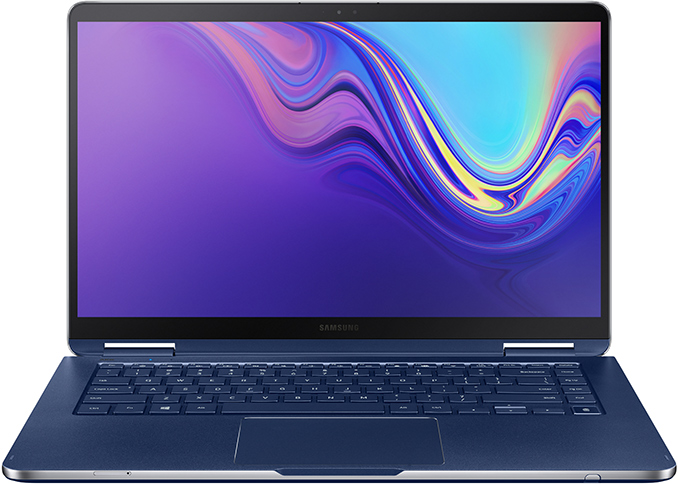

 Quote
Quote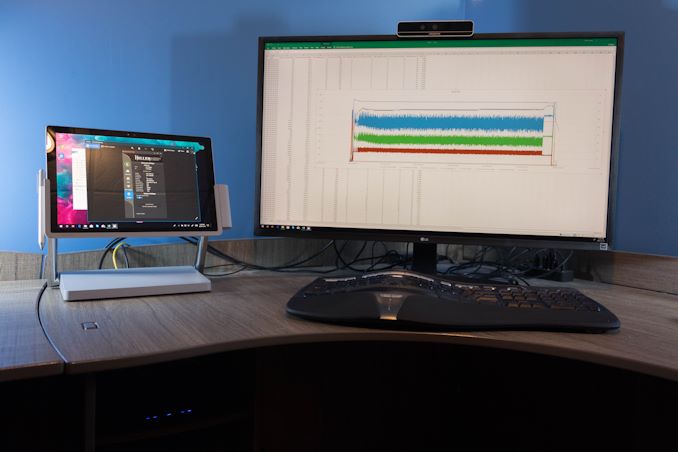

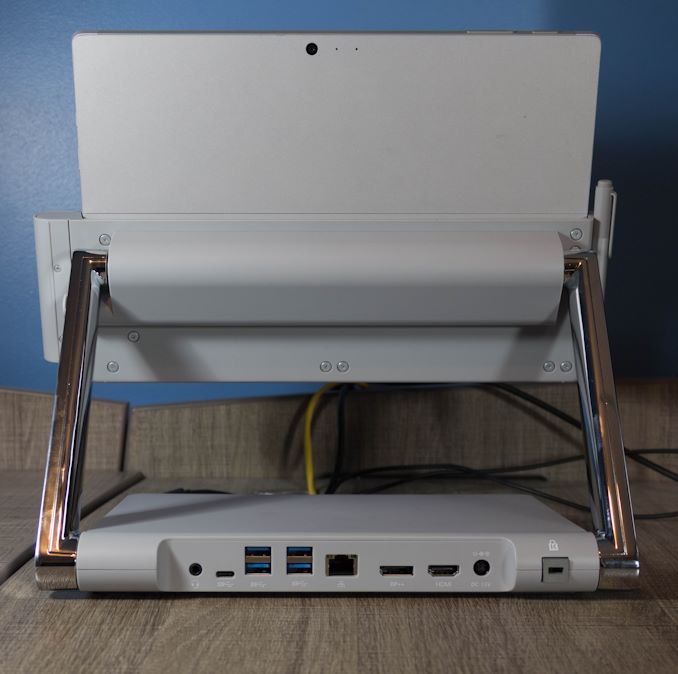


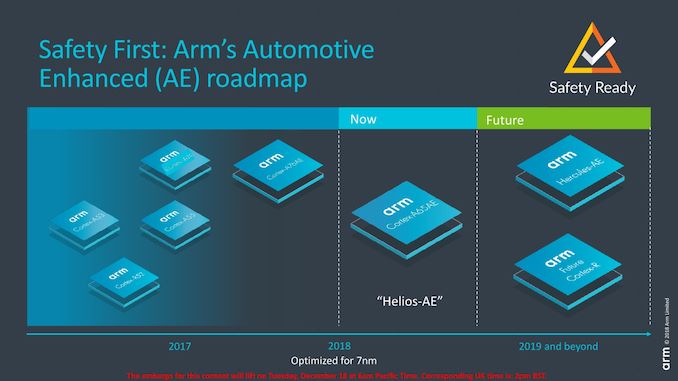




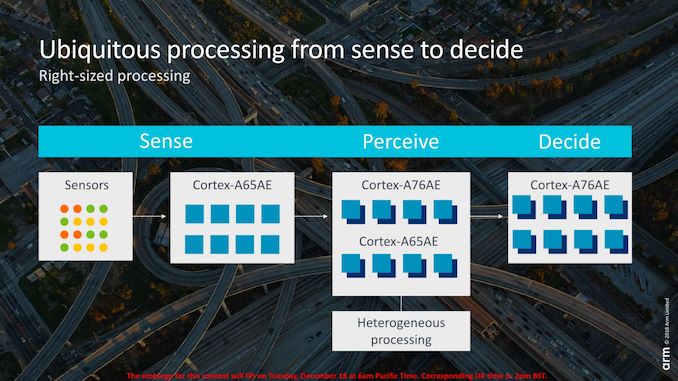
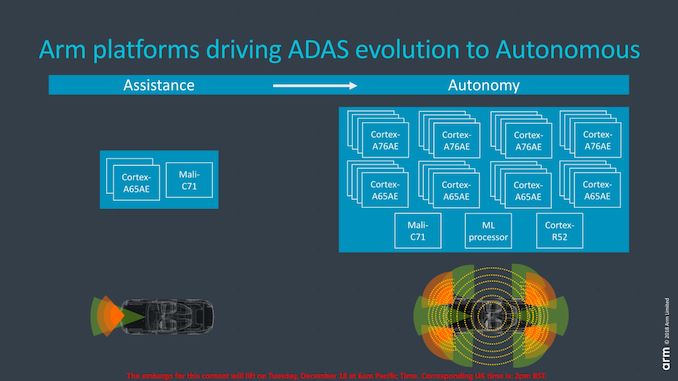
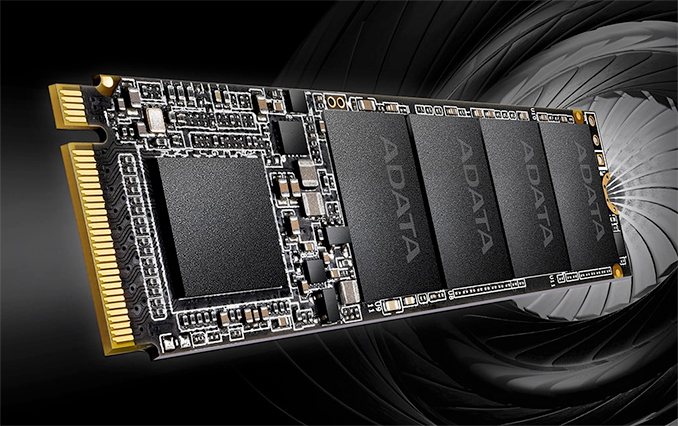
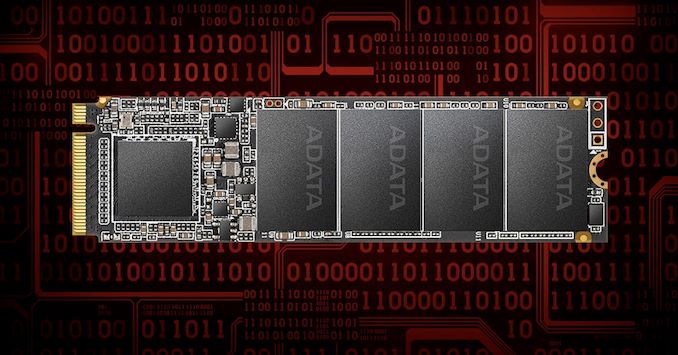
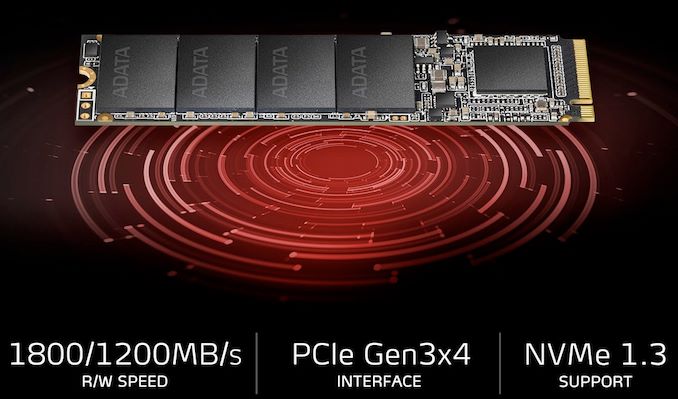





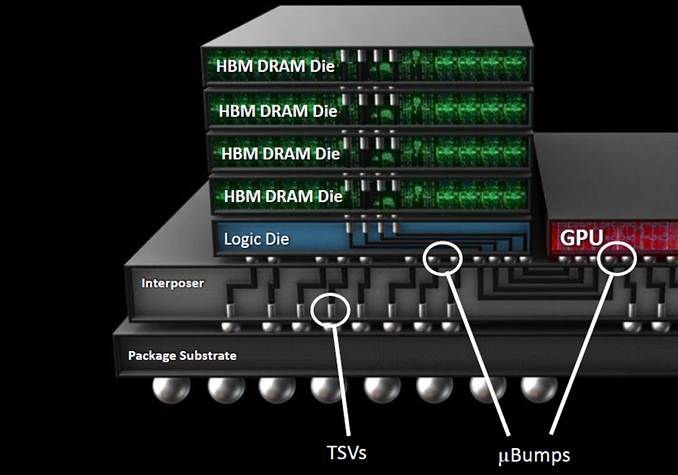
















Bookmarks